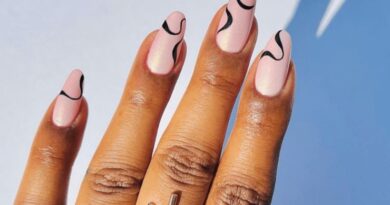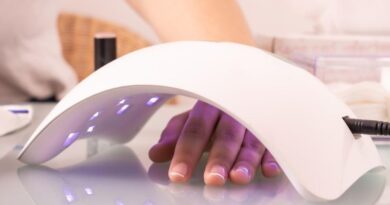Beautifully manicured nails can be a statement of style and self-care, but amidst the allure of nail services, there’s a lurking concern that demands our attention – fungal infections. In our blog, “Nail Services and Fungal Infections: Everything to Know [Things to Avoid],” we embark on a journey to unravel the essential insights into the world of nail care and fungal infections. From understanding the risks to discovering what to avoid, we’ll empower you with the knowledge to enjoy fabulous nails while safeguarding your nail health. Join us as we delve into the delicate balance of nail services and maintaining the wellness of your nails.
What is Fungal Infection?
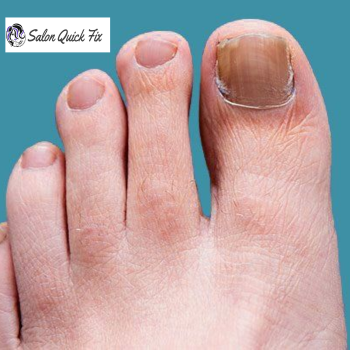
A fungal infection, also known as a mycosis, is a medical condition caused by the overgrowth or invasion of fungi, which are microorganisms that thrive in various environments, including the skin, nails, and internal organs. Fungal infections can affect different parts of the body and can range from mild, superficial skin conditions to more severe, systemic infections.
These infections occur when fungi, such as molds or yeasts, colonize and multiply in or on the body. Common types of fungal infections include athlete’s foot (tinea pedis), ringworm (tinea corporis), nail fungus (onychomycosis), and yeast infections (such as candidiasis). Fungi thrive in warm, moist environments, making areas like the skin folds, nails, and mucous membranes susceptible to infection.
Can you get a pedicure if you have toenail fungus?
Yes, you can get a Pedicure with toenail fungus But When getting a pedicure with fungal nails, taking precautions is essential to protect your nail health and prevent the potential spread of the infection. Here are some precautions to keep in mind:
- Choose a Reputable Salon: Choosing a reputable salon when dealing with fungal nails is crucial for your safety and nail health. A reputable salon is one that has established a positive track record of maintaining high standards of hygiene and cleanliness. When you select such a salon, you can trust that they follow strict protocols to prevent the spread of infections. Reputable salons prioritize the sterilization of instruments, maintain clean and sanitized footbaths, and use fresh and clean towels for each client.
- Inform the Technician: Informing the technician about your fungal nail condition is a crucial step when getting a pedicure. By communicating openly about your condition, you enable the technician to take appropriate precautions to ensure both your safety and that of other clients. The technician can use sanitized tools, follow specific hygiene protocols, and apply antifungal nail polish if available. This transparency helps create a safe environment for the pedicure and reduces the risk of spreading the fungal infection.
- Use Disposable Tools: Using disposable tools during a pedicure with fungal nails is a key safety measure. Disposable tools, such as liners for foot baths and single-use nail files, are designed for one-time use and are discarded after each client, ensuring hygiene and preventing cross-contamination. These tools reduce the risk of spreading the fungal infection from one person to another. They provide peace of mind for both clients and technicians by maintaining a clean and safe environment during the pedicure.
- Sterilize Instruments:Sterilizing instruments is a critical step in maintaining hygiene and preventing infection during a pedicure, especially if you have fungal nails. It involves using heat, steam, or chemical methods to kill bacteria, viruses, and fungi on nail tools such as clippers, scissors, and cuticle pushers. Sterilization ensures that these instruments are free from harmful microorganisms, reducing the risk of fungal infection transmission. Properly sterilized instruments protect both the client and the technician, creating a safe and clean environment for nail services.
- Antifungal Nail Polish: Antifungal nail polish is a specialized nail product designed to inhibit the growth of fungi on the nails. It contains active ingredients that help combat fungal infections, such as onychomycosis. When applied, antifungal nail polish creates a protective barrier, preventing further fungal growth and promoting healthier nail conditions. This type of nail polish is often used during pedicures for individuals with fungal nail infections to provide an extra layer of protection and support the healing process.
- Inspect Salon Hygiene: Inspecting salon hygiene is a crucial step when considering a pedicure with fungal nails. It involves assessing the overall cleanliness and sanitization practices of the salon before your appointment. Look for signs of cleanliness, including clean floors, well-maintained footbaths, and the use of fresh towels for each client. By carefully inspecting salon hygiene, you can ensure that the salon follows strict hygiene protocols, reducing the risk of fungal infection transmission and creating a safe and sanitary environment for your pedicure.
- Keep Nails Short: Keeping your nails short is an important precaution when dealing with fungal nails. Trimming your infected toenails as short as comfortably possible reduces the surface area where the fungus can thrive. Shorter nails are easier to maintain, clean, and treat. Additionally, they minimize the risk of further damage or complications caused by the fungal infection.
For More- The 15 Best Nail Glues of 2023
Fungal Infections at the Nail Salon
The Risk Factors
The risk of fungal infections at nail salons primarily stems from shared equipment, inadequate sanitation, and improper handling of nail tools. Here are some key factors to consider:
- Footbaths and Foot Spas: Footbaths and foot spas are common fixtures in nail salons, providing relaxation and therapeutic benefits during pedicures. Footbaths are smaller, portable basins, while foot spas are often larger, stationary units with built-in water jets and massage features. These devices offer clients a soothing soak for their feet, helping to soften skin and prepare nails for grooming. However, the risk arises when footbaths and foot spas are not cleaned and disinfected thoroughly between clients.
- Nail Extensions and Acrylics: Nail extensions and acrylics are popular nail enhancements offered at nail salons. Nail extensions involve adding artificial tips to the natural nails, while acrylics are a mixture of liquid monomer and powder polymer applied to the nails to create a durable, polished look. These enhancements can be visually appealing, but there’s a risk if not done correctly.
- Shared Nail Tools: Shared nail tools are common in nail salons, and they include items such as nail clippers, files, and buffers that are used on multiple clients. The risk associated with shared nail tools is that if these tools are not adequately cleaned and sterilized between clients, they can become a source of fungal and bacterial transmission. Fungi can thrive on these tools, potentially leading to infections in clients who come into contact with contaminated instruments.
- Nail Technicians’ Hands: Nail technicians’ hands play a crucial role in nail services, but they can also be a potential source of infection. Technicians work closely with clients, and if they have fungal or bacterial infections on their hands or nails, there’s a risk of cross-contamination. This can occur when technicians touch a client’s nails or skin during a manicure or pedicure.
- Inadequate Cleaning Practices: Inadequate cleaning practices at nail salons can pose significant risks to clients. This refers to a lack of proper cleaning, disinfection, and sanitation of equipment, surfaces, and footbaths. When cleaning practices are subpar, harmful bacteria and fungi can thrive, leading to potential infections. It’s essential for nail salons to maintain strict cleaning protocols to ensure the safety and hygiene of their clients.
- Poor Ventilation: Poor ventilation in nail salons can contribute to various risks. Adequate ventilation is essential to disperse fumes from nail polish, acrylics, and other products, preventing them from accumulating in the salon. When ventilation is inadequate, these fumes can create a humid environment that encourages the growth of harmful fungi and bacteria.
- Cuticle Cutting: Some nail technicians may engage in cuticle cutting, which can create tiny openings in the skin around the nails. If this procedure is not performed correctly or if unsterilized tools are used, it can introduce fungi and lead to infections.
Is it Safe to Paint Toenails with Fungus?
Painting your toenails when you have a fungal nail infection, such as toenail fungus (onychomycosis), raises concerns about safety and potential risks. Here’s what you need to know about painting your toenails with a fungal infection:
1. Not Recommended During Active Infection: Applying nail polish to fungal-infected toenails is generally not recommended during the active phase of the infection. Nail polish can seal in moisture, creating a favorable environment for fungal growth and hindering the effectiveness of antifungal treatments.
2. Prioritize Treatment: Fungal nail infections can be persistent and challenging to treat. It’s essential to prioritize treatment to address the underlying infection. Treatment options may include topical or oral antifungal medications, laser therapy, or other prescribed interventions. Consistent treatment is crucial for successful recovery.
3. Breathable Nail Polish: If you’re determined to use nail polish while undergoing treatment, consider water-permeable or breathable nail polish brands. These products allow some airflow to the nail, reducing the risk of moisture buildup and potentially having a lesser impact on treatment efficacy.
4. Monitor for Progress: While using nail polish, closely monitor the progress of your treatment. If you notice any worsening of symptoms, such as increased discoloration, thickening, or spreading of the infection, discontinue the use of nail polish and consult your healthcare provider promptly.
5. Hygiene and Salon Precautions: If you decide to visit a nail salon while dealing with nail fungus, exercise caution. Ensure that the salon follows strict hygiene practices, including proper sterilization of tools between clients, to prevent cross-contamination.
YECIRALA 20 Sheets 440 Pcs Pink Red Solid Toe Nails Polish Stickers
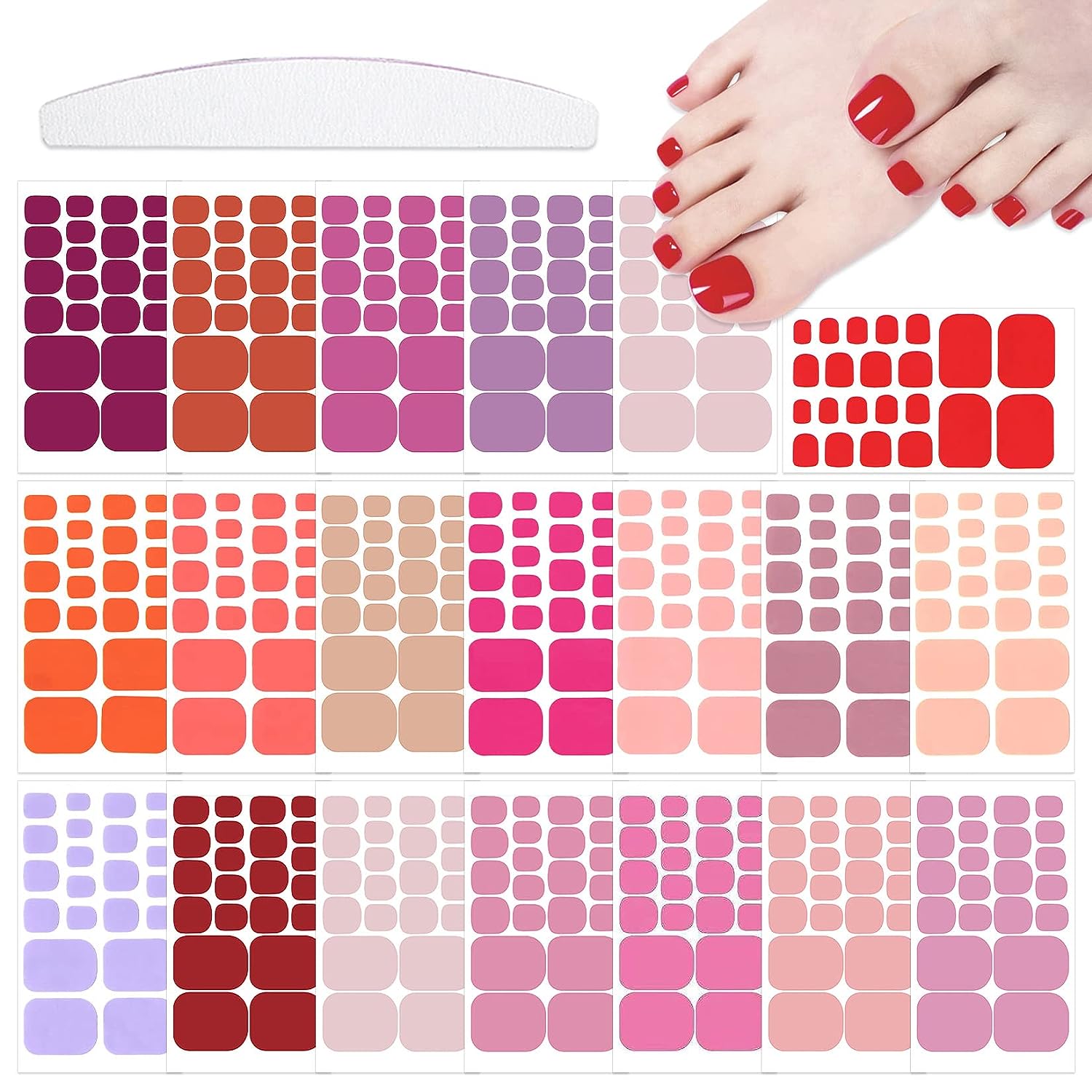
Nails Polish Stickers
- Theme Space
- Cartoon Character Bubble
- Special Feature Lightweight
- Number of Pieces 440
- Style Style3
- Age Range (Description) Adult
Precautions When Painting Toenails with Fungus
If you decide to paint your toenails while dealing with a fungal nail infection, it’s essential to take precautions to minimize the risk of complications and promote nail health. Here are some precautions to consider:
1. Ensure Active Treatment: Before applying nail polish, ensure that you are actively treating the fungal infection. Follow your healthcare provider’s recommendations for topical or oral antifungal medications or any other prescribed treatments.
2. Choose Breathable Nail Polish: Opt for water-permeable or breathable nail polish brands. These allow some airflow to the nail, reducing the risk of moisture buildup that can exacerbate the infection.
3. Prioritize Nail Hygiene: Maintain good nail hygiene by regularly cleaning and drying your toenails, especially after removing nail polish. Proper hygiene helps prevent the spread of the fungus to other nails.
4. Monitor for Progress: While using nail polish, closely monitor the progress of your fungal infection treatment. If you notice any worsening of symptoms, such as increased discoloration, thickening, or spreading of the infection, discontinue the use of nail polish and consult your healthcare provider promptly.
5. Limit the Duration: Avoid leaving nail polish on for extended periods. Remove and reapply the nail polish every few days to allow your toenails to breathe and ensure that the fungal infection is not worsening underneath the polish.
Nail Polish with Nail fungus: What You Need to Know
Nail polish can be a delightful way to enhance the appearance of your nails, but if you’re dealing with a nail fungus infection, there are crucial considerations to keep in mind. Nail fungus, medically known as onychomycosis, is a stubborn condition that affects the health and appearance of nails. Here’s what you need to know about using nail polish when you have nail fungus:
1. Avoid Nail Polish During Treatment: While it may be tempting to conceal the appearance of fungal-infected nails with nail polish, it’s generally advisable to avoid using it during treatment. Nail polish can trap moisture, creating an environment where fungi thrive. Additionally, it can hinder the effectiveness of topical antifungal treatments by preventing them from penetrating the nail.
2. Prioritize Treatment: Fungal nail infections often require time and patience to resolve. It’s essential to prioritize treatment, which may involve oral or topical antifungal medications, laser therapy, or other prescribed interventions. Consistency in treatment is key to successful recovery.
3. Proper Hygiene: Maintain good nail hygiene by regularly cleaning and drying your nails, especially after applying treatments. This helps prevent the spread of the fungus to other nails.
4. Water-Permeable Nail Polish: If you’re determined to use nail polish while undergoing treatment, consider water-permeable or breathable nail polish. These products allow some airflow to the nail, reducing the risk of moisture buildup and potentially lessening the impact on treatment efficacy.
7. Patience is Key: Nail fungus treatment can be a lengthy process, often taking several months to see significant improvement. Be patient and committed to your treatment plan to achieve the best results.
Toenail Fungus and Nail Trimming: Should You Cut Your Toenails?
Manicure Set, FAMILIFE Professional Manicure Kit Nail Clippers
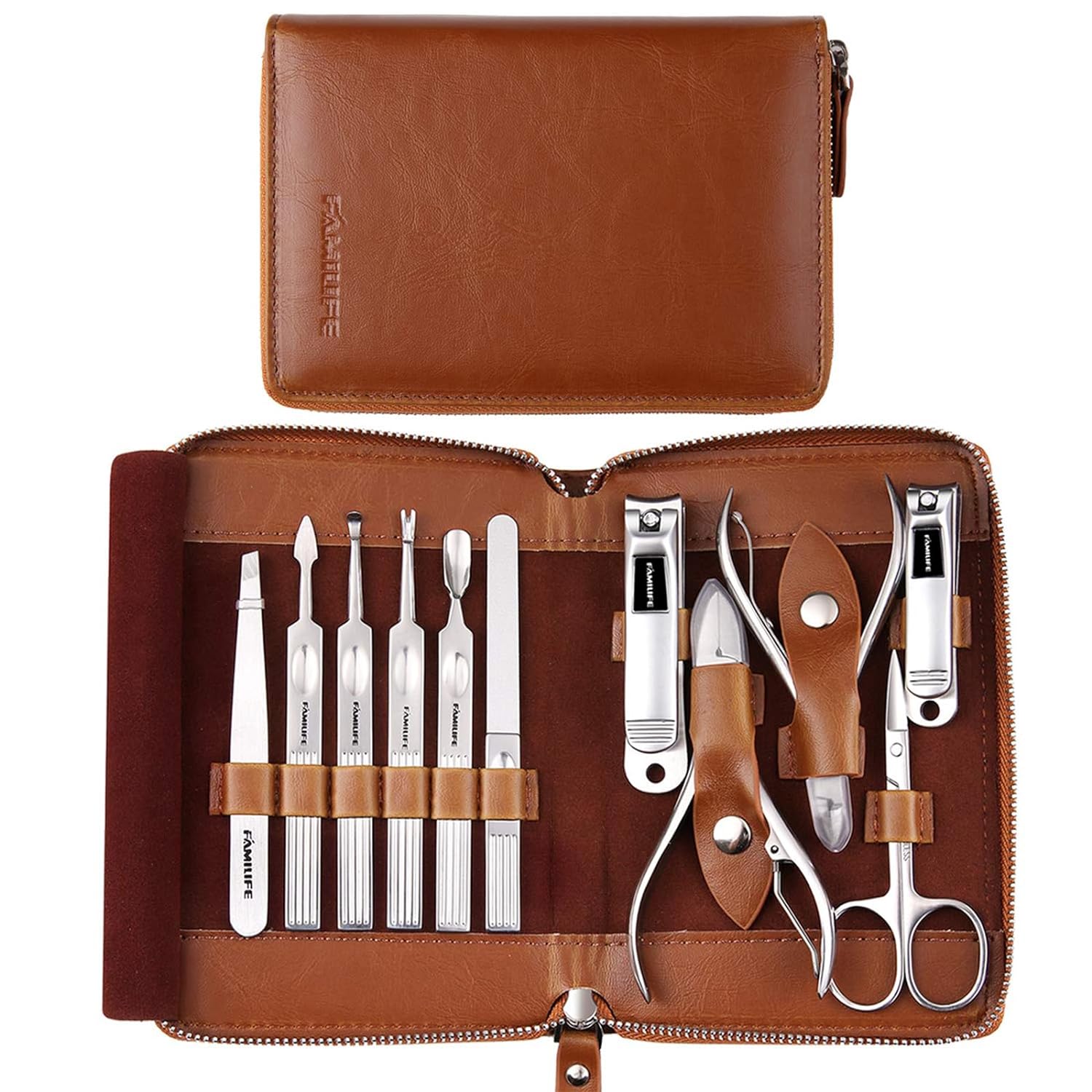
Nail Clippers
- 11 pcs Nail Kit
- Multi-Functional Manicure Set
- Cloth To Protect Grooming Tools
- Mani Pedi Kit with Luxury Fashion Case
- Easy to Use Pedicure Tools
Dealing with toenail fungus, medically known as onychomycosis, can raise questions about proper nail care. One common concern is whether you should continue trimming your toenails when you have a fungal infection. To address this, let’s explore the best practices for nail trimming when dealing with toenail fungus:
1. Gentle and Regular Trimming:
- Do Trim Your Nails: Yes, you should continue trimming your toenails, but with caution. Regular nail trimming is essential to prevent overgrowth and maintain good foot hygiene.
- Use Clean Tools: Ensure that your nail clippers or scissors are clean and disinfected before use to minimize the risk of spreading the fungus.
2. Careful Technique:
- Trim Straight Across: Trim your toenails straight across to prevent ingrown toenails. Avoid rounded or pointed shapes, as they can increase the risk of ingrown nails and nail trauma.
- Avoid Overcutting: Be cautious not to cut the nails too short, as this can create openings for the fungus to enter. Trim them to a comfortable length without going too close to the nail bed.
3. Proper Hygiene:
- Clean Your Feet: Before and after nail trimming, clean your feet with soap and water. Dry them thoroughly, including the spaces between your toes.
- Moisturize Gently: Apply a moisturizer to keep the skin around your nails hydrated but avoid getting it on the infected nail.
4. Seek Professional Help:
- Consider a Podiatrist: If you’re unsure about the best way to trim your nails or if your toenail fungus is severe, consider consulting a podiatrist or foot specialist. They can provide guidance on proper nail care and recommend suitable treatments for the infection.
5. Be Patient:
- Toenail fungus treatment takes time, and it may be a while before you see noticeable improvement in the infected nails. Continue with your treatment plan as prescribed by a healthcare professional.
Precautions
When you have toenail fungus, proper nail trimming is crucial to prevent further complications and maintain overall foot health. Here are some specific precautions to observe when trimming nails affected by toenail fungus:
1. Sanitize Your Tools: Sanitizing your nail care tools is a crucial precaution to prevent the spread of fungal infections and maintain good nail hygiene. Before and after each use, clean your nail clippers or scissors thoroughly with soap and water, and then disinfect them with rubbing alcohol or a disinfectant solution.
2. Trim When Dry: Trimming your nails when they are completely dry is an essential precaution, especially when dealing with toenail fungus. Wet nails are more susceptible to splintering or tearing, which can exacerbate existing nail issues. By waiting until your nails are dry before trimming, you reduce the risk of causing further damage to the affected nail and minimize the potential for complications related to the fungal infection.
3. Use Caution with Curved Nails: Using caution with curved nails is essential, particularly if you have toenail fungus. The fungal infection can cause nails to become thick, brittle, and curved. Trimming curved nails can be challenging and may increase the risk of injury or complications. It’s advisable to seek professional help from a podiatrist or nail specialist who has the expertise to trim curved or ingrown nails safely.
4. Trim Straight Across: Trimming your toenails straight across is an important precaution, especially when dealing with toenail fungus. This practice helps prevent ingrown nails and minimizes the risk of nail trauma. Toenails affected by fungus can be brittle and prone to irregularities, so cutting them straight across promotes safer and more comfortable nail care while reducing the chances of complications related to the fungal infection.
5. Don’t Cut Too Short: Avoiding cutting your toenails too short is a vital precaution when dealing with toenail fungus. Trimming nails excessively can create openings for the fungus to enter and increase the risk of injury and discomfort. Instead, aim to trim your toenails to a comfortable length without going too close to the nail bed. This precaution helps maintain proper nail hygiene and reduces the potential for complications associated with fungal infections.
6. Be Gentle: Being gentle when trimming your nails is essential to prevent nail trauma and avoid exacerbating any existing issues, especially in cases of toenail fungus. Using a controlled and gentle motion while trimming reduces the risk of accidentally causing injuries or discomfort. Gentle care also minimizes the likelihood of damaging the already compromised nail structure, promoting overall nail health and comfort during the nail care process.
7. Inspect for Infections: Regularly inspecting your nails and the surrounding skin for signs of infection or abnormalities is a vital precaution in maintaining nail health, especially if you have toenail fungus. Look for redness, swelling, discharge, or any changes in nail color or texture. Promptly identifying signs of infection allows for early intervention and prevents potential complications.
Also Read- How to dry nail polish faster?
Home Remedies for Toenail Fungus
Toenail fungus, medically known as onychomycosis, can be a persistent and challenging condition to treat. While consulting a healthcare professional for guidance and prescription treatments is recommended, several home remedies and natural approaches may complement medical intervention. Here are some effective home remedies for toenail fungus:
- Tea Tree Oil: Tea tree oil is a natural remedy known for its potent antifungal and antibacterial properties. It is commonly used to treat various skin conditions, including toenail fungus. When applied topically, diluted tea tree oil can help combat fungal infections by inhibiting fungal growth and promoting healthier nails. Regular and consistent use of tea tree oil on the affected nail can be an effective part of a home-based treatment regimen for toenail fungus.
- Apple Cider Vinegar Soak: An apple cider vinegar soak is a popular home remedy for toenail fungus. Apple cider vinegar’s acidity creates an unfavorable environment for fungi to thrive. By mixing equal parts of apple cider vinegar and warm water and soaking the affected foot for 15-20 minutes daily, the solution can help inhibit fungal growth and potentially improve the appearance of the infected nail over time.
- Baking Soda Paste: A baking soda paste is a simple and natural remedy for treating toenail fungus. Baking soda’s antifungal properties can help combat the infection and exfoliate the affected nail. To create the paste, mix baking soda with a small amount of water to form a thick consistency. Apply this paste to the infected toenail and let it sit for a few minutes before rinsing it off. Regular use of this paste can help reduce the appearance of the fungus and improve the condition of the nail over time.
- Oregano Oil: Oregano oil is a natural remedy renowned for its strong antifungal properties. When diluted with a carrier oil, such as olive oil, it can be applied topically to combat toenail fungus effectively. The oil contains compounds like carvacrol and thymol, which have been shown to inhibit fungal growth. Applying diluted oregano oil to the affected toenail and leaving it on for about 30 minutes before rinsing and drying the area can be an integral part of a home-based treatment regimen for fungal nail infections.
- Garlic: Garlic is a natural remedy with potent antifungal and antibacterial properties. Crushed garlic cloves can be mixed with olive oil to create a paste, which is then applied to the affected toenail. After application, the area is covered with a bandage and left on overnight. This method allows the active compounds in garlic to combat toenail fungus effectively. Regular use can help improve the condition of the infected nail.
- Vinegar and Hydrogen Peroxide Soak: The vinegar and hydrogen peroxide soak is a home remedy used to address fungal nail infections. By combining equal parts of white vinegar and hydrogen peroxide, this solution creates an environment that is inhospitable to fungi. Soaking the affected foot in this solution for approximately 30 minutes daily can help inhibit fungal growth and improve the appearance of the infected nail.
- Coconut Oil: Coconut oil is a natural remedy known for its antifungal properties and its ability to moisturize the skin and nails. When applied topically to the affected toenail, it can help combat fungal infections and promote healthier nail growth. The oil’s fatty acids create a barrier that inhibits fungal growth and keeps the affected area moisturized. Regular application of coconut oil to the infected nail.
Can Vicks VapoRub Kill Toenail Fungus?
Vicks VapoRub, a popular over-the-counter topical ointment, is often mentioned as a potential remedy for toenail fungus. While some people claim it has helped improve the appearance of their infected nails, scientific evidence supporting its effectiveness is limited.
Vicks VapoRub contains ingredients like menthol, camphor, and eucalyptus oil, which have mild antifungal and antibacterial properties. However, these ingredients may not penetrate the nail bed deeply enough to completely eradicate fungal infections. Toenail fungus often requires more targeted treatments, such as prescription antifungal medications or laser therapy.
Preventing Tips for Fungal Infections
Toenail Fungus by PureHealth Research Full-Spectrum Helps Soothe

Repair, & Stimulate Fresh
- Brand PUREHEALTH RESEARCH
- Item Form Capsules
- Specialty Fungus,Repair,Healthier,Growth,Healthy
- Number of Items 1
- Unit Count 60.00 Count
Fungal infections, such as nail fungus (onychomycosis), can be stubborn and challenging to treat once they take hold. Therefore, prevention plays a crucial role in maintaining healthy nails. Here are some essential tips to help you guard against fungal nail infections:
1. Maintain Good Foot and Nail Hygiene:
- Regularly wash and thoroughly dry your feet, including between the toes.
- Keep your toenails clean and trim them straight across to prevent ingrown nails.
- Avoid sharing personal items like nail clippers, files, and footwear to minimize the risk of cross-contamination.
2. Choose Appropriate Footwear:
- Opt for well-ventilated shoes that allow your feet to breathe.
- Avoid tight, narrow shoes that can create a moist environment, promoting fungal growth.
- Use moisture-wicking socks to keep your feet dry.
3. Protect Your Feet in Public Areas:
- In communal spaces like public pools, gyms, and showers, wear protective footwear, such as flip-flops, to reduce exposure to fungi.
4. Be Cautious in Nail Salons:
- Select reputable nail salons that follow strict hygiene practices.
- Ensure that shared nail tools are properly sterilized between clients.
- If you have a fungal nail infection, inform the technician to take extra precautions.
5. Avoid Walking Barefoot in High-Risk Areas:
- Refrain from going barefoot in public showers, locker rooms, and other damp environments that may harbor fungi.
6. Choose Breathable Nail Products:
- When applying nail polish or extensions, opt for breathable and water-permeable options to reduce the risk of trapping moisture.
7. Monitor Your Nails:
- Regularly inspect your nails for any signs of fungal infection, such as discoloration, thickening, or changes in texture.
- Seek prompt treatment if you suspect an infection to prevent it from worsening.
The Signs of Fading Fungus
“The Signs of Fading Fungus” explores the positive indicators that suggest progress in the treatment of fungal nail infections. Recognizing these signs provides encouragement and motivation to individuals dealing with stubborn fungal infections, emphasizing the importance of persistence and adherence to treatment regimens.
1. Reduced Discoloration
Reduced discoloration is a promising sign in the treatment of fungal nail infections. Fungal infections often cause nails to turn yellow, brown, or greenish, affecting their appearance. When discoloration diminishes, it suggests that the infection is receding, and the nails are gradually returning to their natural color. This visual improvement serves as a positive and motivating indicator that the treatment is effectively combating the fungal presence.
2. Thinner and Smoother Nails
Observing thinner and smoother nails is a positive development in the treatment of fungal infections. Fungal-infected nails are typically thick and brittle, which can be uncomfortable and unsightly. As the fungal infection recedes, nails begin to regain their normal thickness and smooth texture. This change signifies progress in the treatment process and often brings relief to individuals who have been dealing with thickened and irregular nails.
3. Gradual Healing of Nail Edges
The gradual healing of nail edges is a reassuring sign during the treatment of fungal nail infections. When fungal infections are present, the edges of the nails may lift or show signs of separation from the nail bed. As the infection subsides, these edges gradually reattach, indicating that the fungal activity is diminishing. This improvement not only enhances the appearance of the nails but also suggests that the treatment is effectively combating the infection, instilling hope for complete recovery.
4. Less Pain and Discomfort
Experiencing less pain and discomfort is a significant relief in the treatment of fungal nail infections. Fungal infections, particularly when severe or affecting sensitive areas like the toenails, can cause pain and discomfort. As the infection fades and the nails start to improve, individuals typically notice a reduction in these uncomfortable sensations.
5. Improved Nail Growth
Healthy nail growth is a clear sign of progress. While it may take time for new, healthy nails to replace the infected ones entirely, you should notice improved growth patterns. New nails may appear clearer and smoother, indicating that the fungus is no longer active in those areas.
The Bottom Line
In the realm of nail services, balancing style and nail health is paramount. While the allure of beautifully painted nails and pampering pedicures is undeniable, it’s essential to be aware of the potential risks associated with fungal nail infections. In this journey of “Nail Services and Fungal Infections: Things to Know and Things to Avoid,” we’ve uncovered valuable insights. Prioritizing your nail health, seeking treatment when necessary, and practicing impeccable hygiene in nail salons are pivotal. Choose breathable nail polish cautiously, monitor your progress diligently, and remember, patience is your greatest ally.
FAQs
While rare, improper nail care practices during services may introduce fungal infections. Ensure salons follow strict hygiene protocols.
Choose salons with clean and sterilized tools, experienced technicians, and a reputation for hygiene.
Yes, if not applied and maintained properly. Ensure proper nail preparation, application, and timely removal to minimize the risk.

![Nail Services and Fungal Infections: things to know [things to avoid]](https://salonquickfix.com/wp-content/uploads/2023/08/nail-services-and-fungal-infections-things-to-know-things-to-avoid-800x445.jpg)
